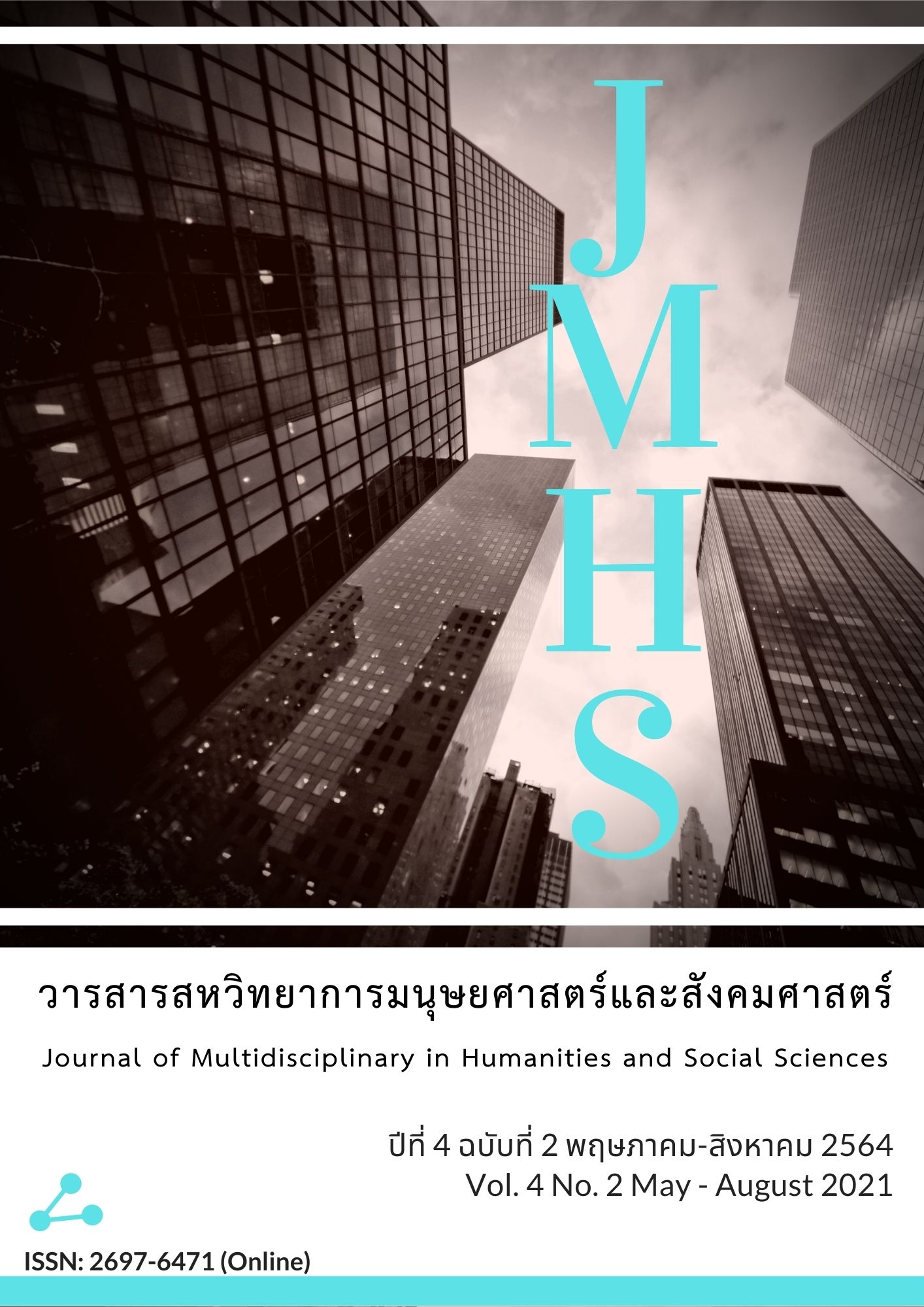The Four Holy Places of Buddhism: Vision for Sustainable Organization Management
Main Article Content
Abstract
The purposes of this study were as follows: (1) to study the vision and guidelines for the management of Buddhist organizations; (2) to study the concept of laying the foundations for the dissemination of Buddhism; and (3) to remove the body of knowledge hidden in the misanthropy of The Four Holy Places of Buddhism. The study was a qualitative research using the concept of management as a research framework. The research area was The Four Holy Places of Buddhism, 4 sub-districts with Phra Dhammayakorn. Director-General and Advisors of the Department of Religious Affairs, totaling 4 persons who gave information by selecting specific information. The instrument for collecting data was semi-structured interviews, observation, and synthesis. Analysis data by content analysis and write a descriptive narrative.
The research results were found as follows:
1. Vision of the Buddha It consists of 3 aspects of Buddhism which are foresight, planning, organizational management, Vithuro, able to manage business with specific expertise, leadership, build a strong team, Nisayasampanno, and good human relations. Good work of others.
2. The concept of laying the foundation for disseminating knowledge in Buddhism. To save the common people from hardships by reducing the conditions of conflict with the existing organization perfectly.
3. What is hidden in the 4 synagogues: 1) the birthplace, it is the starting point for defining corporate objectives with an understanding of society, 2) a place for enlightenment, it is self-management, 3) the place of orientation, place goals for the organization and choose a team, and 4) location nirvana creates interest. The main condition is to reduce conflicts.
Research findings were: The visionary concept of sustainable organizational management is Bodhi (Bodhi tree) concept, consisting of be objective, set objective, understand society, director, manage self diligently, try to be self-reliant, have a goal, the main goal is people with leadership, team building, and interestingness that makes the organization more attractive.
Article Details
Views and opinions appearing in the Journal it is the responsibility of the author of the article, and does not constitute the view and responsibility of the editorial team.
References
จันทรัตน์ มั่นวิเชียร. (2560). กระบวนการพัฒนาปัญญาจากการจาริกแสวงบุญ ณ สังเวชนียสถาน 4 ตำบล. บัณฑิตวิทยาลัย มหาวิทยาลัยมหาจุฬาลงกรณราชวิทยาลัย.
นพพร เทพสิทธา. (2557, 14-20 กุมภาพันธ์). คู่มือชีวิต: โอวาทปาติโมกข์-วิสัยทัศน์ กลยุทธ์และพันธกิจของพุทธบริษัท. เนชั่นสุดสัปดาห์, 22(1133). 69.
นวพร เรืองสกุล (2548). หลักการในการสร้างและบริหารองค์กรของพระพุทธเจ้า. กรุงเทพฯ: ศูนย์พุทธศาสน์ศึกษา จุฬาลงกรณ์มหาวิทยาลัย.
พระครูปลัดสุวัฒนวชิรคุณ และ คณะ. (2552). ศึกษาวิเคราะห์ยุทธศาสตร์หลักในการเผยแผ่พระพุทธศาสนาของพระธรรมทูตไทยในอินเดีย. คณะพุทธศาสตร์ มหาวิทยาลัยมหาจุฬาลงกรณราชวิทยาลัย.
พระธรรมโกศาจารย์ (ประยูร ธมฺมจิตฺโต). (2549). พุทธวิธีบริหาร. กรุงเทพฯ: มหาวิทยาลัยมหาจุฬาลงกรณราชวิทยาลัย.
ยุทธวีร์ แก้วทองใหญ่ และ พระครูกิตติญาณวิสิฐ. (2558). เทคนิคการบริหารตามแนวพุทธ. วารสารครุศาสตร์ปริทรรศน์ คณะครุศาสตร์ มหาวิทยาลัยมหาจุฬาลงกรณราชวิทยาลัย, 2(2), 24-32.
ผู้ให้ข้อมูลสำคัญ
กิตติพนธ์ พานสุวรรณ. (2563). อธิบดีกรมการศาสนา, ลุมพินีวัน ประเทศเนปาล. สัมภาษณ์. 3 มีนาคม.
พระครูปลัดเฉลิมชาติ ชาติวโร. (2563). หัวหน้าคณะพระธรรมวิทยากร, เมืองกุสินารา สาธารณรัฐอินเดีย. สัมภาษณ์. 1 มีนาคม.
พระปลัดวรัญญู อคฺควชิโร, (2563). พระธรรมวิทยากร, เมืองพุทธคยา สาธารณรัฐอินเดีย. สัมภาษณ์. 28 กุมภาพันธ์.

